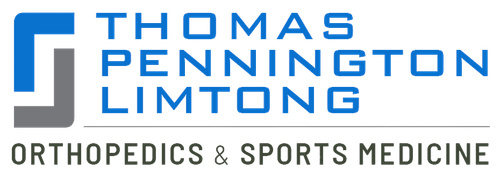 In general, shoulder problems occur due to issues with the tendons, muscles, and ligaments, rather than the bones. Tendinitis and/or tears of the tendon(s), such as the biceps tendon and the rotator cuff, are some common conditions of the shoulder.
In general, shoulder problems occur due to issues with the tendons, muscles, and ligaments, rather than the bones. Tendinitis and/or tears of the tendon(s), such as the biceps tendon and the rotator cuff, are some common conditions of the shoulder.
Many individuals with shoulder pain have issues with several structures in their shoulder. For instance, people with tendinitis or bursitis may also have labrum (cartilage) and rotator cuff tears.
Board certified orthopedic surgeons Dr. Steven C. Thomas and Dr. Gregory T. Bigler provide procedures for the knee and shoulder to patients in Las Vegas, Nevada as well as Greater Pahrump, Bullhead City, Lake Havasu, Mesquite, NV, and surrounding locations.
Rotator Cuff Injury or Tear
The rotator cuff refers to the primary structure that moves and stabilizes the shoulder. It comprises four muscles and four associated tendons that connect the muscles to the bones. They create a cuff over the ball-and-socket joint of the shoulder.
Rotator cuff issues can be mild or severe. The cuff may become swollen, frayed, or detach entirely from the bone. A majority of rotator cuff injuries involve the supraspinatus tendon. This tendon is found at the top of the shoulder.
This tendon may get pinched between the ball of the upper arm and the portion of the shoulder blade known as the acromion when a person raises their arm up or out to the side. This pinching of the rotator cuff is called impingement.
Impingement usually leads to swelling of the rotator cuff tendons. Therefore, the resulting injury is commonly known as tendinitis. It also leads to irritation of the bursa (a sac of tissue between the bone and the tendon), so it is often called bursitis. In fact, impingement, rotator cuff tendinitis, and bursitis are all different names of the same problem.
Shoulder Cartilage Tear (Glenoid Labrum Tear)
The ball at the top of the upper arm bone lies in a socket in the shoulder blade known as the glenoid, which is lined with a ring of cartilage and fibrous tissue (labrum). The labrum surrounds the ball of the upper arm and enables it to remain within the glenoid.
The labrum can sustain a tear in multiple ways. A tiny tear may impact only the rim of the labrum. But a more severe tear at the top of the labrum may also impact the biceps tendon and even lead to complete detachment.
Labrum tears can develop due to a shoulder dislocation or from regular wear and tear on the joint.
Biceps Tendinitis
Various tendons connect the muscles to the bones to offer stability and support to the main shoulder joint. The biceps tendon links the biceps muscle to the shoulder blade. This tendon becomes swollen, and the condition is known as biceps tendinitis.
Shoulder Arthroscopy
Shoulder arthroscopy enables the surgeon to use very tiny incisions to view the inside of the shoulder and repair any damage. The surgery typically takes between one to two hours to complete, and the patient will be able to return home on the day of the procedure itself.
The surgeon will use general anesthesia, and the patient will remain asleep during the procedure. They may feel drowsy for several hours following the surgery. Therefore, the patient will need to arrange for someone to drive them back home after the procedure.
Board certified orthopedic surgeons at the Thomas and Bigler Knee & Shoulder Institute receive patients from Las Vegas, Nevada as well as Greater Pahrump, Bullhead City, Lake Havasu, Mesquite, NV, and nearby areas for knee and shoulder procedures.
If you would like to schedule an appointment or learn more about the Knee and Shoulder Institute procedures & treatments performed by Las Vegas, Nevada board-certified surgeons Steven C. Thomas, MD and Gregory T. Bigler, MD. Contact the office today click here.
Serving patients from and around greater Las Vegas, Lake Havasu, Bullhead City, Mesquite, Pahrump, Nevada.
